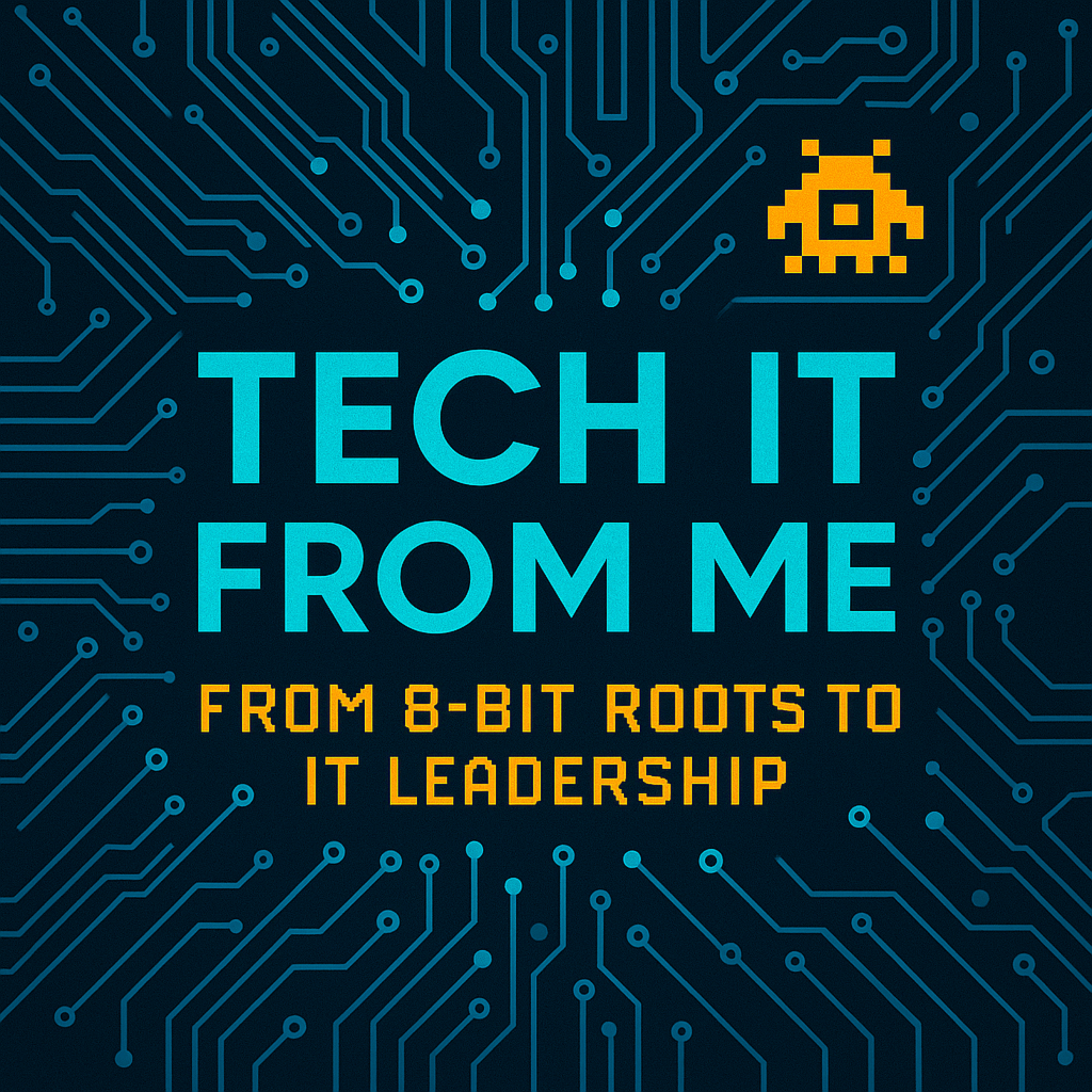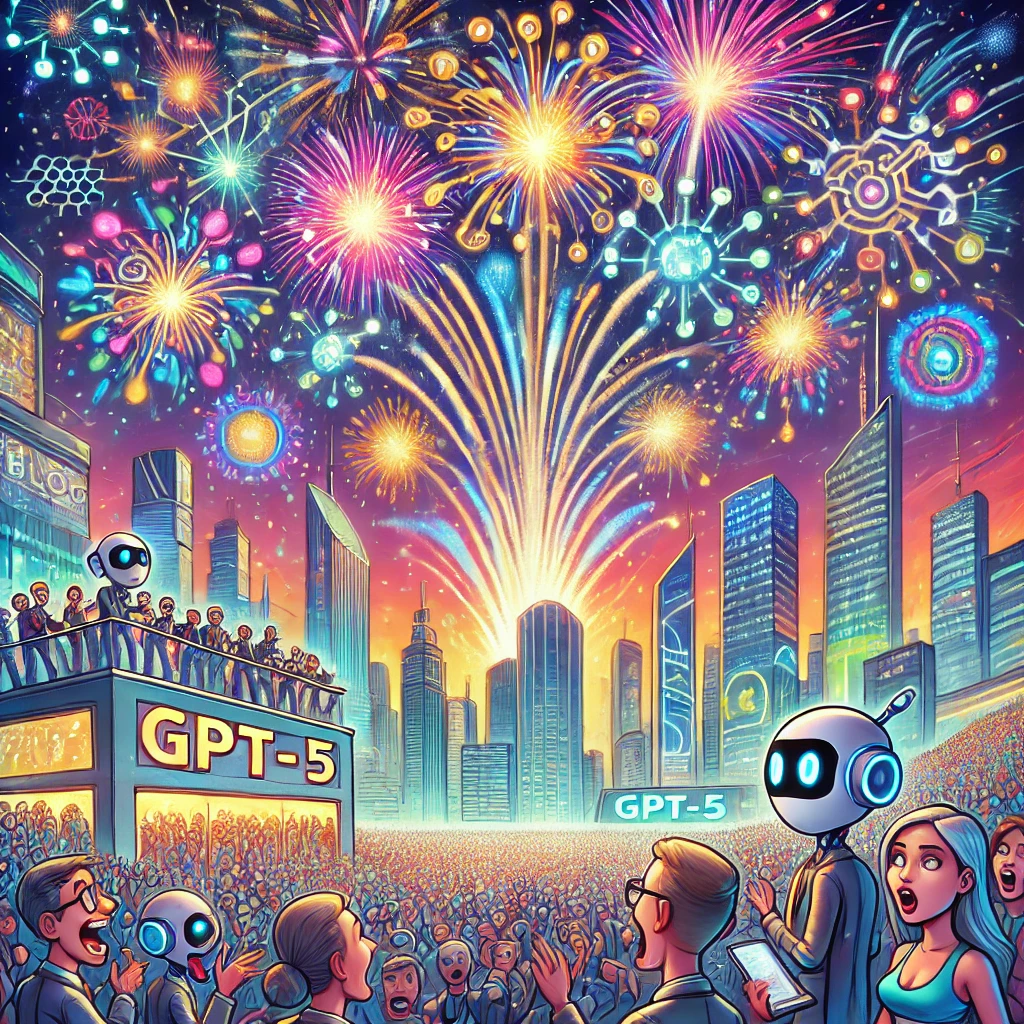OpenAI has officially released GPT-5, calling it their most advanced ChatGPT model to date.
The upgrade promises more intelligent reasoning, faster responses, fewer hallucinations, and deeper integrations with tools like Gmail and Google Calendar.
Sam Altman says the leap from GPT-4 to GPT-5 is so big that going back feels “miserable.” But is GPT-5 really the iPhone moment for AI—or is it just the latest upgrade in an already fast-moving race?
I’ve already spent some time using the new version, and I can confirm: many of the improvements are noticeable right away. The model feels faster, more confident in its answers, and much better at staying on track in more extended conversations. It’s still not perfect, but it’s a more enjoyable and productive experience.
Let’s unpack what’s new, what’s useful, and whether this release changes the game.
Table of Contents
🧠 What’s New in GPT-5?
OpenAI officially rolled out GPT-5 to all users on Friday, August 8, 2025, marking what the company calls its most advanced ChatGPT release yet. For Pro subscribers, the upgrade is even bigger—you now get access to GPT-5, GPT-5-Pro, and GPT-5-Thinking, each tuned for different levels of depth and reasoning.
So, what exactly has changed? Quite a bit:
1. Smarter, Context-Aware Reasoning
GPT-5 takes “chain-of-thought” logic to the next level, breaking down complex problems into smaller, logical steps—without you having to spell it out. This means more accurate answers, fewer logical gaps, and better handling of multi-part queries.
2. Dramatically Fewer Hallucinations
While no AI is perfect, GPT-5 shows a noticeable reduction in factual errors. In my testing, I’ve seen cleaner, more consistent outputs that stay true to source material—especially when summarizing technical or niche topics.
3. ‘Vibe Coding’ for Developers
This is a game-changer for coders. Instead of simply producing functional code, GPT-5 can now interpret how you want your code to feel—whether that’s clean and minimalist, performance-optimized, or playful and experimental. It bridges the gap between intent and execution.
4. Unified Model Routing
Say goodbye to manually switching between browsing mode, code interpreter, or GPT-4 for different tasks. GPT-5 automatically chooses the right capabilities in the background, making the experience seamless and letting you focus on your work.
5. Deeper App Integrations
You can now connect GPT-5 directly to tools like Gmail, Google Calendar, and potentially more productivity platforms in the near future. This turns ChatGPT from a standalone assistant into something closer to a true personal AI workspace.
6. Custom Personalities with Memory
Want an AI writing partner with your exact tone? Or a coding assistant who remembers your preferred frameworks? GPT-5 now allows you to create named GPTs with persistent memory, so each assistant gets better the more you use it.
From my own use, two features stand out: Unified Model Routing, which makes every interaction feel frictionless, and Vibe Coding, which is almost eerie in how well it understands intent. For anyone who works with AI regularly, these aren’t just quality-of-life improvements—they’re workflow accelerators.
📱 Is This Really the iPhone Moment?
Every major AI release seems to get compared to a tech milestone—Apple’s original iPhone launch, the debut of the Retina display, or even the first personal computer. With GPT-5, the buzz is no different. Some have already called it the “iPhone moment” for AI, suggesting it could be a turning point in how we interact with technology (source: The Verge).
But is that really the case?
If we look at the AI timeline, GPT-3 was arguably the real “wow” moment for the public—it introduced mainstream users to just how human-like a language model could feel (see my breakdown of AI’s history here). GPT-4 refined that experience, making it more reliable and capable. GPT-5? It’s more of a polished evolution than a radical leap. Think going from an iPhone 13 to an iPhone 15 Pro Max—sleeker, faster, with smarter features, but not a reinvention.
Here’s where I think the hype meets reality:
- Yes, GPT-5 is better. You’ll notice faster responses, better reasoning, and smarter integrations right away.
- No, it’s not magic. The leap isn’t as dramatic as some suggest—at least not yet.
- The AGI hype needs perspective. We’ve been here before with Web3, metaverse promises, and blockchain revolutions that fizzled (see my take on AI hype cycles).
That said, I can tell from my testing: it’s hard to go back to GPT-4 once you’ve used GPT-5 for a while. It feels like a more responsive, more intuitive assistant—one that’s inching closer to being a proper daily driver for professionals.
🔧 Where GPT-5 Actually Helps
While the headlines focus on bigger, brighter, and more human-like, the real question for most of us is: Where does GPT-5 actually make a difference in day-to-day work?
After using GPT-5 extensively across IT, writing, and research tasks, I’ve seen several clear advantages over GPT-4:
1. For Developers
With vibe coding and improved reasoning, GPT-5 doesn’t just spit out functional code—it writes in your preferred style, anticipates potential pitfalls, and suggests optimizations before you even ask. This means fewer rewrites and cleaner commits (see my breakdown on coding with AI here).
2. For Writers & Content Creators
From blog posts to video scripts, GPT-5 delivers clearer drafts that stay on-topic and require less editing. Its improved contextual memory also helps keep tone and style consistent across longer pieces—something GPT-4 often struggled with.
3. For Researchers & Analysts
Whether you’re summarizing dense reports or pulling insights from large datasets, GPT-5 processes and condenses information faster, with fewer hallucinations. This means you can spend more time thinking critically about the results instead of verifying every line (related: How AI can mislead if unchecked).
4. For Busy Professionals
The new Gmail and Google Calendar integrations mean you can draft emails, plan meetings, and generate follow-up notes—all without leaving ChatGPT. It’s not just answering questions; it’s helping you act on them.
5. For Long, Complex Requests
One of GPT-5’s most underrated upgrades is focus retention. Even in multi-step prompts, it stays on track instead of drifting into irrelevant tangents. This is especially valuable for IT workflows where one missed step can cause significant delays (see my AI adoption advice for IT leaders).
Bottom line: GPT-5 isn’t replacing knowledge workers anytime soon—but it shifts your workflow into a higher gear. You still need to steer; GPT-5 makes the road smoother and the trip faster.
You still need to drive the process. GPT-5 shifts it into a faster gear.
🏢 What This Means for IT Leaders & Businesses
For IT leaders, CIOs, and business owners, the GPT-5 release isn’t just another AI headline—it’s a signal that practical AI adoption is accelerating. But here’s the key takeaway: you don’t need to overhaul your entire stack tomorrow. Instead, now is the time to strategically experiment, govern, and integrate.
Here’s what I’d be thinking about right now:
1. Employee Readiness & Training
Your teams may have access to GPT-5 already, but do they know how to use it effectively—and securely? AI productivity gains come when staff are trained not just in prompt writing, but in understanding limitations, bias, and data privacy (see my AI job impact breakdown).
2. Governance & Compliance
Smarter AI doesn’t mean safer AI. Attackers will adapt to new models just as quickly as businesses adopt them (Gartner warns about AI security risks). Consider:
- Do you need a formal policy for AI-generated code and content?
- How will you audit AI-assisted decisions for compliance and accuracy?
- Who is responsible for AI usage oversight in your org?
3. Integration into Existing Workflows
With GPT-5’s new app integrations (Gmail, Google Calendar, and more to come), you can start embedding AI where your teams already work. Early pilot projects can uncover efficiency wins without a massive system change.
4. Cost-Benefit Analysis
Upgrading to GPT-5 Pro for your team could be a productivity multiplier—but you need to weigh it against licensing costs, usage limits, and security trade-offs. Many organizations are experimenting with a “center of excellence” model where a small AI-proficient group leads adoption and shares learnings internally.
5. Industry Benchmarking
If your competitors are using GPT-5 to speed up product development, improve customer support, or automate analysis, waiting too long could mean falling behind (see my Y2K-to-AI leadership lessons).
In short, GPT-5 is an opportunity, not a mandate. The businesses that will benefit most are those that experiment deliberately, govern wisely, and train their people first.
🤖 Are We Closer to AGI?
Whenever OpenAI drops a major update, the AGI (Artificial General Intelligence) conversation comes roaring back. GPT-5 is no exception—some headlines are already hinting that we’re on the brink of machines that “think” like humans (MIT Technology Review covers the debate).
But let’s pump the brakes.
OpenAI itself defines AGI as “highly autonomous systems that outperform humans at most economically valuable work” (source). GPT-5, while more capable than its predecessors, is still a specialized AI—brilliant at certain language and reasoning tasks, but not independently creative, curious, or self-motivated in the human sense.
Why GPT-5 Feels Closer to AGI
- Improved reasoning chains mean it can handle more complex, multi-step requests.
- Better memory and personalization make it feel more “aware” of you over time.
- Unified tool routing gives it the illusion of adaptability—choosing the best mode automatically.
Why We’re Still Not There
- GPT-5 has no true understanding of the world—only statistical associations.
- It lacks generalized goals outside of responding to prompts.
- It can still produce confident but factually wrong answers (hallucinations), even if less often than GPT-4 (I’ve covered the risks here).
In other words, GPT-5 is a powerful narrow AI with more polish and adaptability, but AGI remains a moving target—one that experts can’t agree will arrive in 5 years or 50 (see AI timeline debates from Stanford HAI).
The danger in treating GPT-5 like AGI is complacency: over-trusting its outputs, underestimating bias, and skipping human oversight. The real opportunity is using it as an augmented intelligence tool—boosting human decision-making without replacing it.
🔮 Final Thoughts
GPT-5 is, without question, the most capable version of ChatGPT yet. It’s faster, smarter, more focused, and—thanks to integrations—more useful in everyday workflows. For developers, writers, researchers, and IT leaders alike, the leap in practical productivity is real.
But it’s also important to keep perspective. GPT-5 isn’t magic, and it’s not AGI. Like every AI upgrade before it, the novelty will eventually fade, and what will matter most is how effectively you integrate it into your work. The real winners in this AI race won’t be the companies with the newest tools—they’ll be the ones that train their people, set strong governance, and adopt AI deliberately.
If you’re curious about where AI might head next, I’ve explored that in The Real History of AI: From Turing to Transformers and my breakdown of AI’s impact on the future of work.
In the meantime, GPT-5 is here, and it’s ready to work—if you are. Whether it becomes the iPhone moment for AI or just another step on the road to AGI will depend on how we, as users and leaders, choose to apply it.
📌 Related Posts from Tech It From Me:
- Behind the Buzzwords: What Is a Large Language Model, Really?
- Will AI Really Replace All Mundane Jobs? My Take on Geoffrey Hinton’s Bold Claim
- The Real History of AI: From Turing to Transformers
(Feature image generated with the help of DALL-E.)

